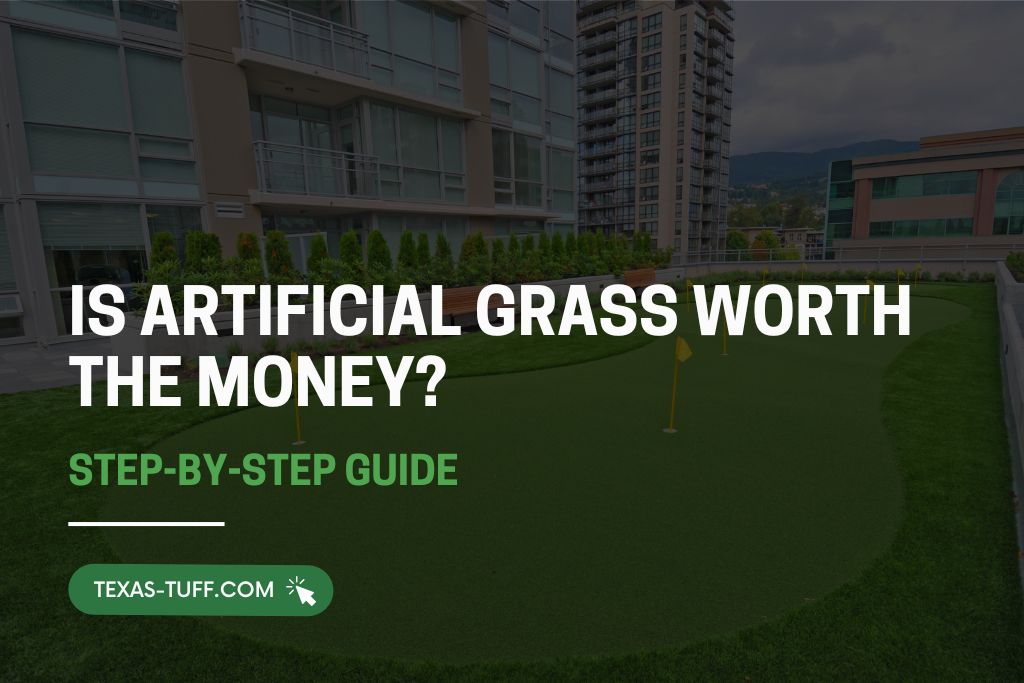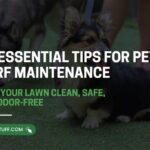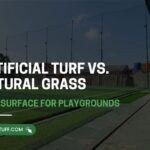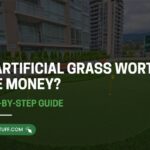If you’re thinking about upgrading your yard, you may be wondering whether artificial grass is truly worth the investment. With rising water bills, constant maintenance, and the challenges of keeping a lush lawn, artificial turf can be a smart solution.
Not all lawns are the same, and neither is every artificial turf option. Choosing the right type can impact both your enjoyment and long-term costs.
Artificial grass isn’t just a “set it and forget it” solution. It’s an investment that can save you time, water, and stress for years to come. From pet-friendly yards to stunning landscape lawns, the right turf can transform your outdoor space while being practical and durable.
You don’t have to guess if it’s worth it. In Dallas-Fort Worth, Texas Tuff has helped hundreds of homeowners make informed decisions about artificial grass, ensuring they choose the best option for their yard, lifestyle, and budget.
Making the right choice can be simple, cost-effective, and stress-free when you have the right information.
Table of Contents
The Upfront Cost: A Major Initial Investment
Installation Costs:
Professional artificial turf installation typically ranges from $8 to $12 per square foot and can reach $20 per square foot depending on complexity, material choice, and quality. This includes grading, sub-base preparation, turf placement, infill, and edging.
Factors Influencing Price
- Area Size and Complexity: Larger lawns cost more. Slopes, intricate landscaping, and limited access increase labor and installation time.
- Material Quality: Turf materials; nylon, polyethylene, and polypropylene—vary in durability and feel. Higher pile height, density, and premium infill enhance realism but increase cost.
- DIY vs. Professional Installation: DIY can save money but requires expertise in grading, drainage, and proper installation. Professional installation ensures correct leveling, drainage, and long-term durability.
What the Cost Covers
- Grading & Leveling: Prepares the yard for a smooth, even surface and ensures proper water runoff.
- Sub-Base Preparation: Creates a stable foundation, improves drainage, and prevents shifting.
- High-Quality Turf Materials: Premium fibers, UV-resistant blades, and realistic textures are designed to last 15–25 years.
- Infill & Edging: Maintains blade uprightness, adds stability, and supports consistent wear in high-traffic areas.
Comparison Point
Natural sod or seed has a lower upfront cost, usually a few dollars per square foot, but requires ongoing maintenance, watering, fertilization, and replacement. Artificial turf costs more initially but saves money long-term and requires minimal upkeep.
Texas Tuff Pro Tip: Consider the total cost, including materials, installation, and long-term maintenance savings. Choosing quality turf and professional installation ensures a durable lawn that withstands Texas weather for decades.
Long-Term Financial Analysis: Where the Savings Happen
Investing in artificial grass isn’t just about replacing your lawn, it’s about reducing long-term costs and saving both money and time.
Maintenance Savings
Artificial turf eliminates most ongoing expenses associated with natural grass:
- No Water Bills: Irrigation is unnecessary, which is especially valuable in drought-prone areas like Dallas-Fort Worth.
- No Lawn Equipment Costs: Mowers, trimmers, fuel, and routine maintenance are no longer required.
- No Fertilizers or Chemicals: Pesticides, herbicides, and fertilizers are no longer needed.
- Potential Incentives: Some municipalities offer rebates or tax credits for water-saving landscaping, further increasing your savings.
ROI (Return on Investment) & Payback Period
The average American spends about 70 hours per year on lawn care. Artificial grass frees this time for family, hobbies, or relaxation, adding indirect financial value.
Lifespan & Replacement
Premium artificial turf typically lasts 15–20 years. Eventually, it will need replacement, but even with this cost considered, artificial grass usually remains more cost-effective than ongoing natural lawn maintenance.
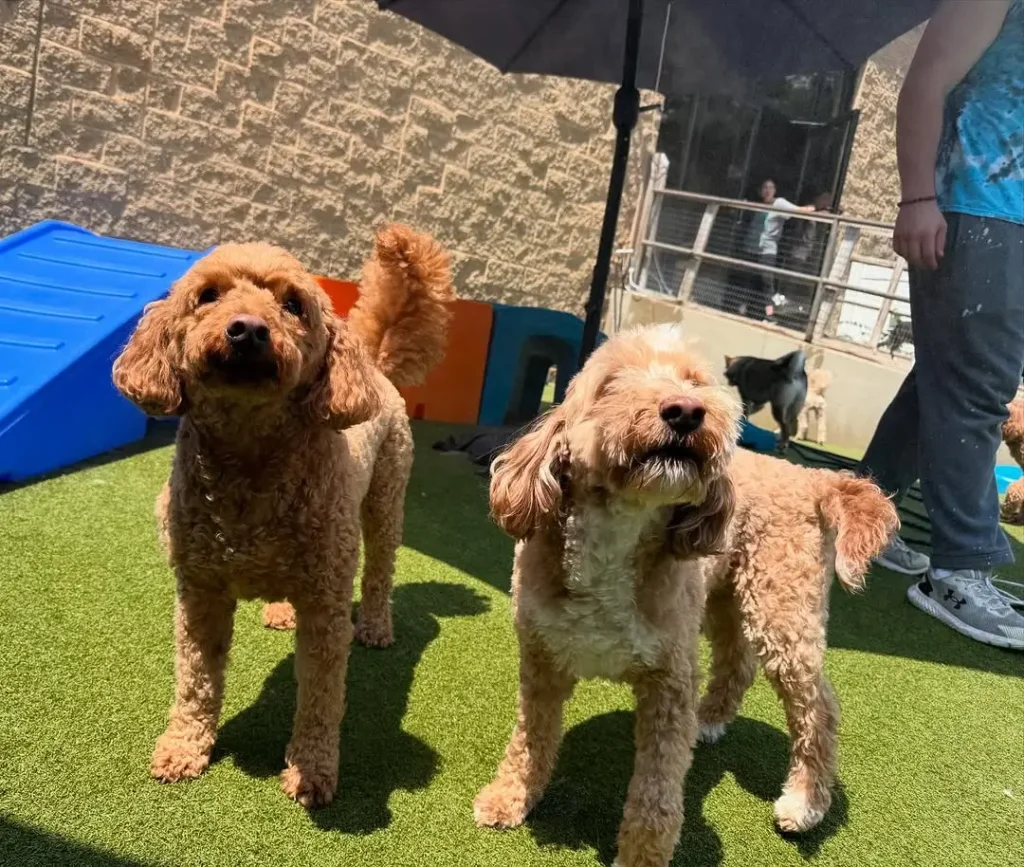
Beyond the Money: Key Benefits (Pros)
Artificial grass offers more than just cost savings. Its benefits cover aesthetics, durability, versatility, property value, and environmental impact.
Aesthetics
- Lawn stays green and uniform year-round
- No browning, thinning, or patchy areas
- High-quality turf mimics natural grass texture and color
Durability
- Resists wear from foot traffic, children, and pets
- No muddy spots or compacted soil
- Maintains shape and appearance over time
Versatility
- Can be installed in shade, rooftops, balconies, or uneven terrain
- Transforms previously unusable spaces into functional, green areas
- Works for decorative landscaping, pathways, and pool surrounds
Curb Appeal & Property Value
- Creates a polished, well-maintained look
- Attracts potential buyers with low-maintenance appeal
- Adds value by providing a visually appealing, functional lawn
Environmental (Water) Benefits
- Saves significant amounts of water
- Eliminates need for fertilizers, herbicides, and pesticides
- Reduces chemical runoff, supporting sustainability
The Hidden Costs & Drawbacks (Cons)
Artificial grass has many benefits, but there are important hidden drawbacks to consider before installation.
Heat Retention
- Turf gets significantly hotter than natural grass in direct sunlight.
- Can be uncomfortable for bare feet, children, and pets.
- May require shading or cooling infill for comfort in hot climates.
Environmental Impact
- Biodiversity Loss: Does not support insects, worms, or other soil organisms.
- Material Concerns: Made from plastics; recycling and disposal are challenging.
- No Natural Cooling or Air Filtration: Synthetic turf lacks the cooling and air-filtering benefits of living grass.
Aesthetics (Subjective)
- Some people feel it looks or feels “fake.”
- Missing elements include the smell and texture of natural grass.
Health & Safety Concerns
- Ongoing debates about potential injury risks in sports or chemical exposure.
- Proper installation and specialized infill materials can mitigate many concerns.
Odor Retention
- Turf can retain pet urine or other smells if not cleaned and drained properly.
- Antimicrobial infill and regular maintenance help prevent odor buildup.
Our Final Verdict
At Texas Tuff Artificial Grass, we believe that for the right homeowner, synthetic turf is an outstanding investment that pays dividends in convenience, aesthetics, and long-term financial savings.
It’s a set-it-and-forget-it solution that delivers a consistently great-looking yard with minimal fuss.
If you’re ready to reclaim your weekends and have a lawn that can handle the Texas heat without breaking a sweat, artificial grass might just be the smartest investment you make in your home this year.

